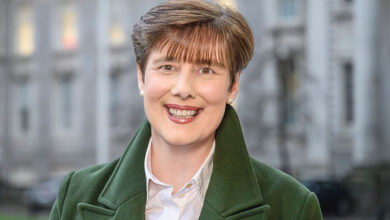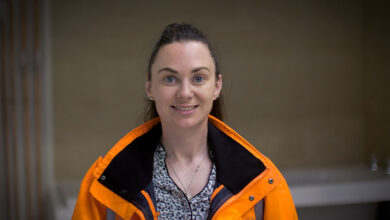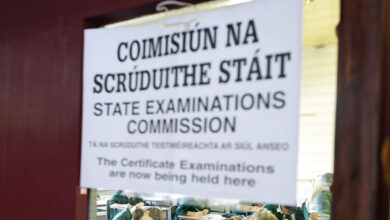Developing a Technological University
 Dublin Institute of Technology is a major player in plans to establish Ireland’s first Technological University. The institution will ensure that Dublin keeps developing as a major driver for the regional and national economy.
Dublin Institute of Technology is a major player in plans to establish Ireland’s first Technological University. The institution will ensure that Dublin keeps developing as a major driver for the regional and national economy.
The National Strategy for Higher Education to 2030 has identified a role for a different type of institution on the Irish landscape: a Technological University. Responding to this opportunity, Dublin Institute of Technology (DIT), Institute of Technology Blanchardstown (ITB), and Institute of Technology Tallaght (ITT) have formed an alliance to create a new institution in the Dublin region – an institution that will provide educational opportunities for a diverse base of learners, reflecting differing ‘pace and place’ requirements.
While new to Ireland, the concept of a Technological University is well-established elsewhere, including in Scandinavia, Germany, Australia and Canada. The vision for the TU4Dublin partners is to build a modern, vibrant university that combines the collective experiences, capabilities, passion and resources of the three partner institutions. It will be a new kind of university that engages pro-actively with the region, with its distinctive practice-led, research-informed and enterprising profile.
A new university for a new Ireland
The members of the TU4Dublin Alliance have separately played important roles in Irish higher education and together they believe they will make an even bigger difference. DIT has been part of the Irish higher education system for over 125 years. With autonomous degree-awarding authority up to PhD level, and supporting over 20,000 students, DIT offers professional career-oriented learning in a wide range of disciplines, and has a strong research base.
This year, DIT has commenced its move to a single campus at Grangegorman in Dublin’s north inner city. The first 1,000 students are already located on the campus and by September 2017, that number will rise to 10,000 students. The campus is a flagship project for Ireland and is also one of the largest higher education projects in Europe. The award-winning masterplan has sensitively incorporated the campus into the city landscape, and both new build and refurbished listed buildings coalesce in a sustainable, city centre development.
Institute of Technology Blanchardstown (ITB) has pursued its mission of making education accessible to a diversity of learners since it was established 15 years ago. Over 3,000 students attend ITB, of which number 47 per cent are classified as non-standard CAO, including 25 per cent mature learners. From its campus, ITB offers a range of practice-based, career-focused courses in informatics, engineering, horticulture, business and humanities.
Institute of Technology Tallaght was established 20 years ago in South Dublin County and has a student population of almost 4,500. In its relatively brief history, it has grown in size, stature, in the range and level of programmes provided and in its active research community. The percentage of part-time students (32 per cent) is one of the highest in the country and the institute adapts programme design and delivery to meet learners’ requirements, with some programmes delivered within companies.
Support for industry and innovation is key for the three institutions and strong industry engagement is reflected in successful technology transfer, enterprise creation and vibrant research activity. DIT Hothouse has helped to create more than 200 new enterprises which have raised over €100 million in equity investment and has created 1,300 smart economy jobs in the region. ITB and IT Tallaght have responded to their respective regional briefs through on-campus industry and innovation centres. LINC provides an ideal environment for knowledge-intensive companies in Blanchardstown, while IT Tallaght provides supports to early-stage enterprises in the high technology and knowledge intensive sectors in its Synergy Centre.
Building on their respective strengths, over the last three years the three institutions have worked together to lay the foundations for what will be ‘a new university or a new Ireland’ – an institution that will transform lives and offer new opportunities.
Supporting the Dublin region
While serving the country as a whole, the new institution will respond in particular to the requirements of the city region. Dublin currently generates some 48 per cent of Ireland’s GDP and employs almost 30 per cent of the workforce. It has attracted almost half of all foreign direct investment (FDI) projects, is home to nine of the 10 largest global ICT companies and accounts for 86 per cent of the total FDI in the financial services sector in Ireland. In addition it attracts almost 4 million visitors annually, generating revenues of over €1 billion, and accounts for 57 per cent of the total number of international students studying in Ireland.
Overall, the ongoing development of the greater Dublin region as an internationally competitive location is critical for the performance of the Irish economy as a whole. If it is to compete successfully with cities such as Barcelona, Toronto or Melbourne, the Dublin city region needs to build its talent base, infrastructure and reputation. It therefore needs a diverse but coherent eco-system of higher education institutions offering a comprehensive range of educational options, contexts and pathways.
There is an acknowledged relationship between educational qualifications and labour force status. While overall higher education participation rates in Ireland compare well against OECD comparators, some areas in Dublin continue to have low rates of participation and attainment.
Skills gaps have emerged in sectors such as ICT, engineering, international sales, supply chain management, science and financial services.
TU4Dublin initiatives in re-skilling and flexible lifelong learning opportunities will help tackle the challenges of skills deficits, social exclusion and unemployment, with flexible learning provision on all three physical campuses and through an enhanced digital campus. Working with others, the new institution will support the region in nurturing innovation, attracting new businesses and retaining creative people. Graduates, skilled in their chosen discipline, will be entrepreneurial, effective as leaders and as members of a team and will have a strong sense of civic engagement and social responsibility.
The journey
The TU4Dublin Alliance has gone through the first three of the four-stage process required for application for designation as a Technological University. The next step will be the formal merging of the three institutions which is a pre-condition for application. Subject to enactment of the required legislation, the merger can be achieved by 1 September 2015. From that moment, the formal application to establish a Technological University for Dublin will proceed.
In its submission to the International Review Panel, the TU4Dublin Alliance pledged to “translate our passion for learning, education and research into accessible life-changing opportunities for students on campus, online and in the communities we serve.”





